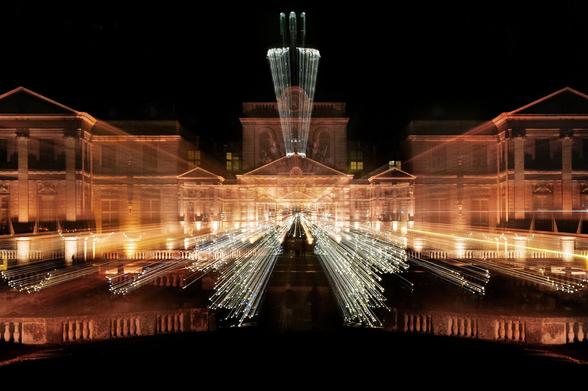Crypt of the Cathedral of Saint-Cyr-and-Sainte-Julitte in Nevers, France, 2021
A crypt (from Latin crypta "vault") is a stone chamber beneath the floor of a church or other building. It typically contains coffins, sarcophagi or religious relics. First known in the early Christian period, in particular North Africa and Byzantium, churches were often built over a Mithraic temple, erected in classical antiquity by the worshippers of Mithras. Worshippers of Mithras had a complex system of seven grades of initiation and communal ritual meals. Initiates called themselves syndexioi, those "united by the handshake". They met in an underground temple, the so called Mithraeum. This Mithraeum was either a natural cave or cavern, or a building imitating a cave, that was adopted by the early christian builders to serve as a crypt for the newly build church above.
In antiquity the Mithraeum primarily functioned as an area for initiation, into which the soul descends and exits. The Mithraeum itself was arranged as an "image of the universe". It is noticed by some researchers that this practice, especially in the context of mithraic iconography, seems to stem from the neoplatonic concept that the "running" of the sun from solstice to solstice is a parallel for the movement of the soul through the universe, from pre-existence, into the body, and then beyond the physical body into an afterlife.
#colorphotography #streetphotographymagazine #streetphotography #nevers #mithras #crypt #contemporaryphotography #romanesquearchitecture #architecturephotography #colorfull #church #amazingarchitecture #devine #light #heavenlylight #romanesque #solstice #architecture #colourphotpgraphy #cathedral #underground #romanesquechurh #colorful #humanity #door #stairs
A crypt (from Latin crypta "vault") is a stone chamber beneath the floor of a church or other building. It typically contains coffins, sarcophagi or religious relics. First known in the early Christian period, in particular North Africa and Byzantium, churches were often built over a Mithraic temple, erected in classical antiquity by the worshippers of Mithras. Worshippers of Mithras had a complex system of seven grades of initiation and communal ritual meals. Initiates called themselves syndexioi, those "united by the handshake". They met in an underground temple, the so called Mithraeum. This Mithraeum was either a natural cave or cavern, or a building imitating a cave, that was adopted by the early christian builders to serve as a crypt for the newly build church above.
In antiquity the Mithraeum primarily functioned as an area for initiation, into which the soul descends and exits. The Mithraeum itself was arranged as an "image of the universe". It is noticed by some researchers that this practice, especially in the context of mithraic iconography, seems to stem from the neoplatonic concept that the "running" of the sun from solstice to solstice is a parallel for the movement of the soul through the universe, from pre-existence, into the body, and then beyond the physical body into an afterlife.
#colorphotography #streetphotographymagazine #streetphotography #nevers #mithras #crypt #contemporaryphotography #romanesquearchitecture #architecturephotography #colorfull #church #amazingarchitecture #devine #light #heavenlylight #romanesque #solstice #architecture #colourphotpgraphy #cathedral #underground #romanesquechurh #colorful #humanity #door #stairs


